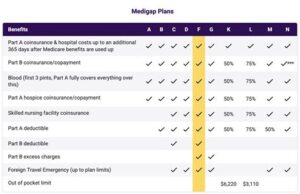Retirement is a significant milestone in one’s life, and with it often comes the transition to Medicare for seniors who are 65 years and older. Medicare is a federal health insurance program that provides coverage for millions of retirees across the United States. Understanding the ins and outs of Medicare is essential to ensure that retirees receive the healthcare benefits they need. In this comprehensive guide, we will delve into the various aspects of transitioning to Medicare for retired seniors over 65.
What is Medicare?
Medicare is a government-sponsored healthcare program that primarily serves individuals aged 65 and older. It also provides coverage for some younger individuals with disabilities. This program is divided into several parts, each addressing specific healthcare needs.
Medicare Part A
Medicare Part A, often referred to as hospital insurance, covers inpatient hospital care, skilled nursing facility care, hospice care, and some home healthcare services. Most retirees do not pay a premium for Part A, as they have paid into the system through payroll taxes during their working years.
Medicare Part B
Medicare Part B, known as medical insurance, covers doctor visits, outpatient care, preventive services, and medical equipment. Unlike Part A, Part B requires a monthly premium based on income. It’s essential to enroll in Part B during your Initial Enrollment Period (IEP) to avoid late enrollment penalties.
Medicare Part C (Medicare Advantage)
Medicare Part C, also known as Medicare Advantage, is offered by private insurance companies approved by Medicare. It combines the benefits of Part A, Part B, and often includes prescription drug coverage (Part D). Medicare Advantage plans may offer additional benefits like dental, vision, and fitness programs.
Medicare Part D
Medicare Part D provides prescription drug coverage. It’s essential for seniors to consider their prescription medication needs and choose a Part D plan that covers their specific medications. Like Part B, Part D plans have a monthly premium.
The Transition Process
Transitioning to Medicare can be a straightforward process when approached methodically. Here are the key steps to make the transition as smooth as possible:
1. Understand Your Initial Enrollment Period (IEP)
Your IEP is the seven-month window surrounding your 65th birthday. It includes the three months before your birthday month, your birthday month, and the three months after. During this period, you can enroll in Medicare Parts A and B without incurring late enrollment penalties.
2. Decide on Original Medicare or Medicare Advantage
You’ll need to decide whether you want to go with Original Medicare (Parts A and B) or a Medicare Advantage plan (Part C). Original Medicare provides more flexibility in choosing healthcare providers, while Medicare Advantage plans often have lower out-of-pocket costs but require you to use a network of providers.
3. Consider Medicare Supplement Insurance (Medigap)
If you opt for Original Medicare, you may want to purchase a Medigap policy to help cover the out-of-pocket costs that Medicare doesn’t pay, such as deductibles and copayments. Medigap plans are offered by private insurers and can provide valuable financial protection.
4. Enroll in Medicare Part D
If you take prescription medications, don’t forget to enroll in a Medicare Part D plan during your IEP or when you first become eligible for Medicare. Be sure to choose a plan that covers your specific medications.
5. Explore Additional Benefits
If you choose a Medicare Advantage plan, take advantage of the extra benefits it may offer, such as dental, vision, and fitness programs. These additional benefits can enhance your overall healthcare experience.
6. Regularly Review and Update Your Coverage
Medicare plans can change from year to year, so it’s essential to review your coverage annually during the Open Enrollment Period (October 15 to December 7). This allows you to make changes to your Medicare Advantage or Part D plans if needed.
Common Questions About Transitioning to Medicare
1. Can I delay enrolling in Medicare if I have other coverage?
Yes, you can delay enrolling in Medicare if you have health coverage through your employer or a spouse’s employer and the employer has 20 or more employees. You may be eligible for a Special Enrollment Period (SEP) when your other coverage ends.
2. What is the cost of Medicare Part B?
The cost of Medicare Part B varies depending on your income. Most people pay the standard premium amount, while higher-income individuals may pay higher premiums. In 2023, the standard Part B premium is $170.10 per month.
3. Do I need both Medicare Part A and Part B if I have Medicare Advantage?
Yes, you need to have both Medicare Part A and Part B if you want to enroll in a Medicare Advantage plan. Medicare Advantage plans are offered by private insurers but are still part of the Medicare program.
Transitioning to Medicare for retired seniors over 65 is a critical step in securing comprehensive healthcare coverage during your retirement years. By understanding the various parts of Medicare, the enrollment process, and the available options, you can make informed decisions that align with your healthcare needs and preferences. Whether you choose Original Medicare or a Medicare Advantage plan, it’s essential to review your coverage regularly to ensure it continues to meet your evolving healthcare requirements.
Frequently Asked Questions (FAQs)
- Can I delay enrolling in Medicare if I have other coverage?
- Yes, you can delay enrolling in Medicare if you have health coverage through your employer or a spouse’s employer and the employer has 20 or more employees. You may be eligible for a Special Enrollment Period (SEP) when your other coverage ends.
- What is the cost of Medicare Part B?
- The cost of Medicare Part B varies depending on your income. Most people pay the standard premium amount, while higher-income individuals may pay higher premiums. In 2023, the standard Part B premium is $170.10 per month.
- Do I need both Medicare Part A and Part B if I have Medicare Advantage?
- Yes, you need to have both Medicare Part A and Part B if you want to enroll in a Medicare Advantage plan. Medicare Advantage plans are offered by private insurers but are still part of the Medicare program.




